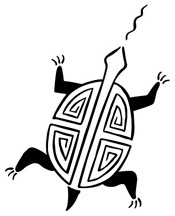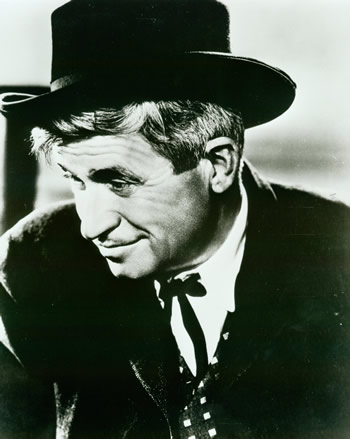 Indigenous
Peoples and Archaeology:
Indigenous
Peoples and Archaeology:
 Indigenous
Peoples and Archaeology:
Indigenous
Peoples and Archaeology:
From Conflict to Coalition
Anthropology 3510 3.0, Sept - Dec 2005
Dr. Kathryn Denning
Sept 19, 2005... Welcome!
Back to main 3510 page.
Plan for the day
1. Announcements/organizational stuff
2. Meet your neighbour
3. Thomas King and The Truth About Stories
4. Reading for next week
Announcements / Reminders
1) n.b. this is a 3-credit course, although it says 6.0 on the course outline (does anyone need an outline?)
2) the room has changed and will be Bethune College 215 from now on
3) if you have had a problem obtaining the King book, you may borrow the photocopy outside my office (Vari 2029); please return it intact as soon as possible, and within two hours. n.b. Anthro office area is locked before 8:30 and after 4:30
4) If you'd like to hear Thomas King in person, he's speaking tonight (Monday Sept 19) with Margaret Atwood as part of his book launch for a collection of short stories called A Short History of Indians In Canada. Place: Gladstone Hotel Ballroom, 1214 Queen West, just east of Dufferin (Queen streetcar stops in front of it). Time: 7 - 10 pm. Cost: free. Doors open at 7:00. There may be a lineup... Book review here.
Your Homework to be handed in today, Sept 19. Worth 2%.
This is a small writing assignment designed to help me get to know you as students, and to help you to start thinking about indigenous peoples and archaeology. It should be no more than 700 words long – be concise. Your tasks:
a) Write a paragraph answering these questions: What do you hope to gain from this course? What interests you about the subject of indigenous peoples and archaeology? How does this connect with your background, life experience, or other courses you've taken? Please specify your year of study, your major, and related courses you've taken.
b) Write a paragraph describing your knowledge of the First Nations within Canada – past and present. What do you know and how did you learn this? [Whether you know nothing, a little, or a lot, it’s fine – be honest.]
c) Once you’ve read 1-119 of King’s book, consider his statement, “The truth about stories is that that’s all we are.” What does this mean to you?
This is worth 2% towards your seminar participation mark for the course. Please hand it in at class next week on 19 September. On the first page of your assignment, clearly write: your name and student number, the course number & name, and my name.
Special note, 19 Sept: if you couldn't do the last part in advance of this class because you were unable to obtain the book, you can hand it in next week (Sept 26) and still receive the mark for it.
If you have completed it, please hand it in today. Refining it on the basis of today's discussions will not improve your mark, since in this particular case, you get the full 2% just for completing the assignment. If you have further thoughts, please do write them down for your own purposes, as we will keep coming back to the theme of "the truth about stories" throughout this course.
Thomas King: The Truth About Stories
Chapter 1: "You'll Never Believe What Happened" Is Always a Great Way to Start"
"The truth about stories is that that's all we are"
Chapter 2: "You're Not the Indian I Had in Mind"
The Portraits by Edward Curtis
Right: "Washo Woman" photographed by Edward Curtis.
http://memory.loc.gov/ammem/award98/ienhtml/curthome.html
Browse by subject: http://memory.loc.gov/ammem/award98/ienhtml/guides.html
Portraits: http://memory.loc.gov/cgi-bin/query/S?ammem/curt:@FIELD(SUBJ+@od1(+portraits+))
---------------------
The Portraits by Richard Throssel
http://ahc.uwyo.edu/onlinecollections/digital/throssel/default.htm
---------------------
Example of "Indian postcard" genre
http://www.the2buds.com/pc/nc/NC_0213.jpg
http://www.homestead.com/ricksaunders/NAP05.html
http://sartprints.com/capc/CAPC0014.jpg
---------------------
Karl May
best known for
" a series of some twenty adventure novels set in the American West of the mid-nineteenth century, including Winnetou (4 vols., 1893-1910), Der Schatz im Silbersee (The Treasure in Silverlake) (1894), and Old Surehand (3 vols., 1894-96). The hero of many of these works was Old Shatterhand, a German immigrant, who along with other German Westmänner ("westmen") such as Old Surehand, Old Firehand, and Old Wabble, traveled the West seeking to bring Christianity and justice while fighting unscrupulous white men and renegade Indians. Old Shatterhand, as Ralph S. Walker has described him, was "an illustrious German superman who could speak, read, and write forty languages, who roamed the world as a writer and archeologist, never made a mistake he couldn't rectify, smoked cigars, and worshipped the Protestant God. He was always keener-witted than the people around him, was a better shot than anyone had even seen before, was generous to a fault, and never killed man nor beast unless he needed to, but if forced did so without compunction or regret." During his wanderings, Old Shatterhand frequently encountered the Apache chief Winnetou, who became the German's blood-brother, and together they experienced a series of adventures.
Although May never set foot in the American West (during his only trip to the United States in 1908 he spent a few weeks in the Northeast), he managed with the aid of atlases, encyclopedias, and geographical and ethnological studies, to recreate a convincing vision of the vast region west of the Mississippi, erring egregiously only perhaps in his description of great, impenetrable "cactus forests." Despite, or perhaps because of, his rather romanticized view of the culture and landscape of the West, May's novels became enormously popular in Germany, particularly with younger readers. For many Germans and other Europeans, Texas and the American West became synonymous with the world of May's works, and the May cult has helped to inspire various "Wild West Clubs" and "Cowboy Clubs." May often took liberties with history and chronology. Yet, whatever their lack of scholarly merits, May's books acquired a huge following, and such diverse figures as Albert Einstein, Albert Schweitzer, Hermann Hesse, and Adolf Hitler were among his avid readers. Since their publication, more than sixty million copies of his books have been sold in Germany, and his works have been translated into thirty languages. A number of them have also been made into movies."
http://www.tsha.utexas.edu/handbook/online/articles/MM/fmaer.html
also see: http://en.wikipedia.org/wiki/Karl_May
More on the Karl May phenomenon later...
---------------------
---------------------
Will Rogers : "Cowboy" or "Indian"?
: "Cowboy" or "Indian"?
"Will Rogers was a true cowboy-and a funny one. Born in Indian Territory, in what would later be known as northeastern Oklahoma, Rogers took at job herding pack animals and transporting them from Argentina to South Africa for use in the Boer War. It was in Africa that he honed his roping skills in Wild West Shows.
Coming back to the U.S., Rogers performed in rodeos and Wild West Shows, and then landed an act in the Ziegfeld Follies in 1915. He told jokes while doing rope tricks, sometimes while chewing on a piece of straw. His western drawl and his political humor made him wildly popular and he moved to film in 1918's Laughing Bill Hyde.
The cowboy humorist's rope tricks and friendly face played well on the silver screen, but his popularity really took off with the advent of talking pictures in 1929. Then audiences could hear Rogers's jokes, as well as watch him rope. He was a hit."
http://hoover.archives.gov/exhibits/HollywoodCowboys/leading%20men/WillRogers.html
Interestingly, classed as "white" here: http://www.nndb.com/people/554/000056386/
More: http://www.cmgww.com/historic/rogers/index.php
---------------------
Who is the "Indian we have in mind" now? Where do those images come from?
Who is "the Indian" presented to us through history and through popular culture?
Chapter 3: "Let Me Entertain You"
Ishi, the "Last Wild Indian"
- there's even more to this story than King mentions, and we will definitely return to Ishi's life, death, and afterlife
What are the key themes of King's book so far? Keep thinking about this question as you read further...
Reading to do for next class, Sept 26
Thomas King. 2003. The Truth about Stories.
Lotte Hughes. 2003. The No-Nonsense Guide to Indigenous Peoples.
As noted in the syllabus, you should do this reading:
|
Sept 26
|
“What is it about us that you don’t like?”: Realities of colonization |
King pp 121-167: Chapter 5, Afterwords Hughes pp 5-59: Foreword, Intro, Chapters 1, 2, 3 |
Upcoming work:
Writing Assignment 1 - 10%, due Oct 3: details will be discussed in class next week (Sept 26th). It will not require independent research; it will be a short essay based on the course reading and a website.
Test, 10%, on Oct 17: will be on the readings, books by King and Hughes.
Other Announcements/Reminders:
If you missed the first classes on 12 and 19 September and are just reading this online, please pick up a course outline from the Anthropology Dept., Vari 2054, 9:30 am - 12:00 pm, 2:00 pm - 4:00 pm.
Special Note: If you have taken NO courses in archaeology, please see KD for recommendations, OR obtain the following book from the Reserve Desk at Scott Library, and read it ASAP. (It’s listed under Anth 3130, Archaeology and Society.)
Archaeology : a brief introduction / Brian M. Fagan. CC 165 F28 2003B
I do have books I will happily loan you... come and see me in my office.